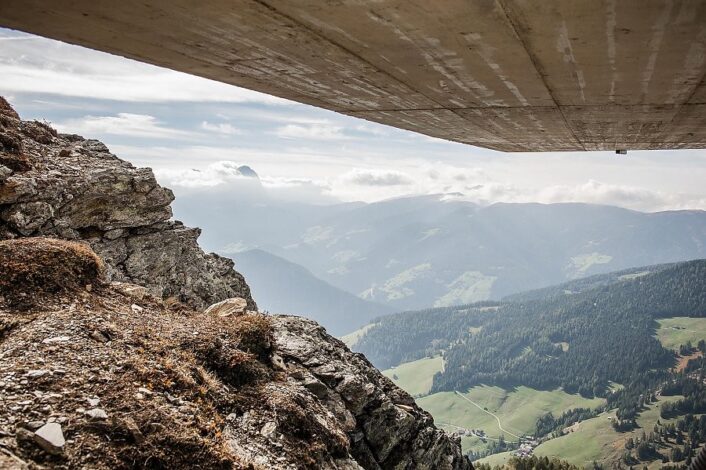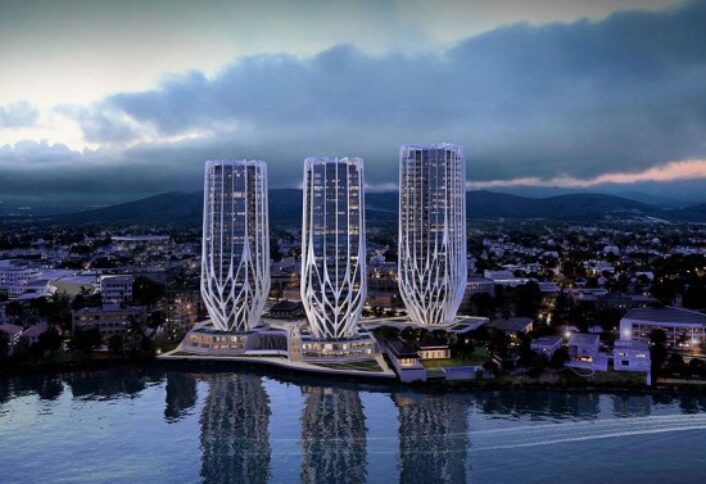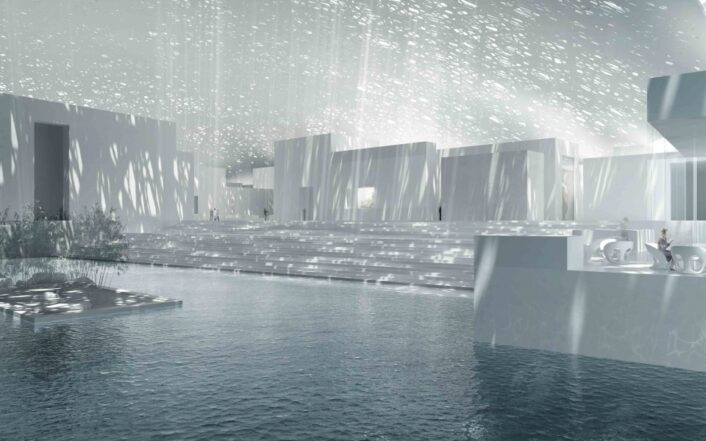Architecture
Riyadh + Hadid = amazing nature-inspired campus
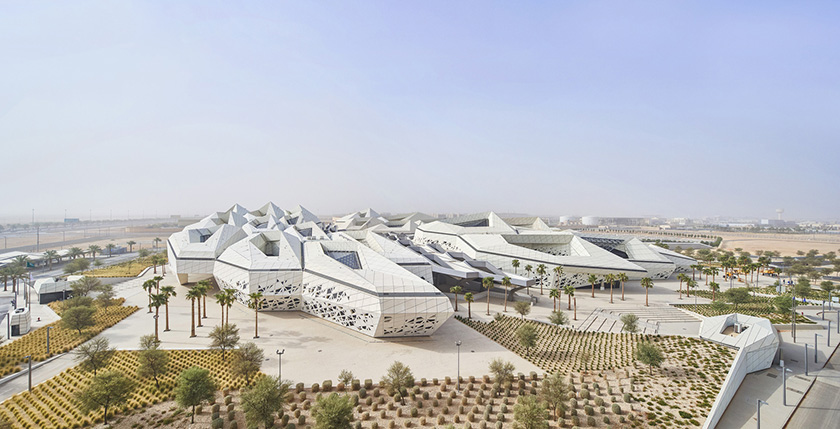
This non-profit is dedicated to investigating policies that aid in efficient energy usage. With thought of the future in mind, the modular design allows for expansion as new structures can weave into the honeycomb design with relative ease. Image courtesy of My Modern Met
10 years ago and when the last king was ruling Saudi Arabia, the country became interested in global warming, energy conservation and clean oil alternatives. A competition to design a state-of-the-art campus which was to address all these issues was held in 2009.
Zaha Hadid was invited into the competition, and she won the bid to design the King Abdullah Petroleum and Research Center. It’s wonderful that Hadid was winner, as she’s spent her career in a mostly male-oriented industry and has been The design was inspired by nature’s soap bubbles and honeycombs.
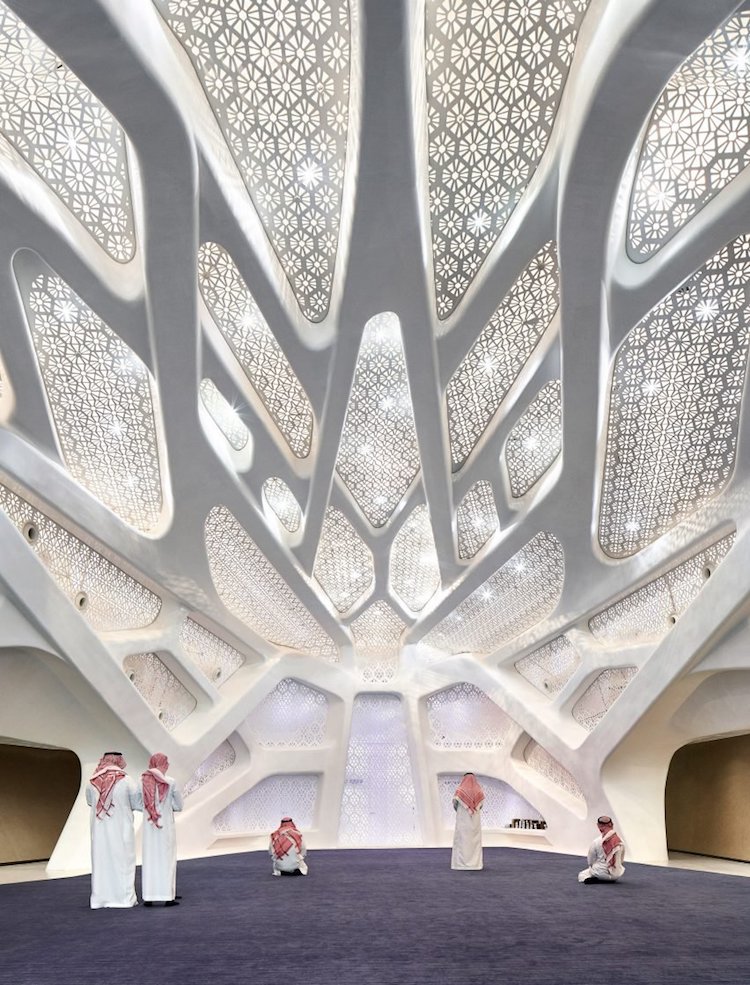
Clad with heat-reflective glass-fiber concert panels, airspace beneath the honeycombs was used as insulation. Image courtesy of My Modern Met
The opening was strategically planned for the annual Saudi Design Week last October and unfortunately, was posthumous for both King Abdullah (the “idea” behind the campus) and Zaha Hadid.
The 113-degree summers were essential to consider in coming up with the design, there are plenty of energy-conservation ideas throughout. The placement of exterior canopied courtyards was carefully considered in order to minimize exposure to the oppressively hot and humid desert climate. Taking cues from nature, its honeycombs which reappear repeatedly because their design is very efficient. Thus, the idea of the hexagon- shell structures arranged in the exterior was born.
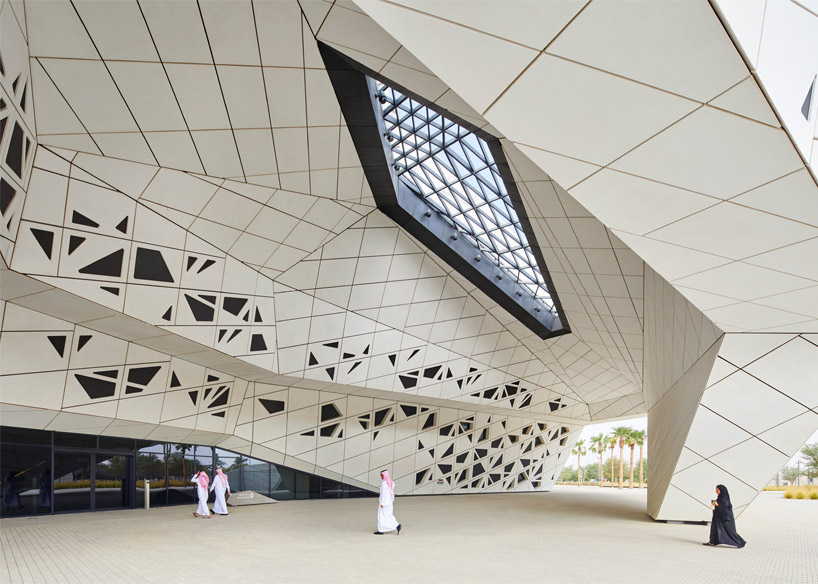
In keeping with the idea of “conservation”, most of the materials for the campus come from less than 500 miles away. Image courtesy of Design Boom
The 17-acre campus is comprised of 5 separate buildings that essentially “rise up” from the desert ground. The King Abdullah Petroleum Studies and Research Center (KAPSRC) is a campus of 70,000 square meter of public space. The 5 buildings are each used for a specific purpose: an energy knowledge center, an energy computer center, a conference arena with an exhibition hall and 300-seat auditorium, a research library and a place for prayer, the musalla.
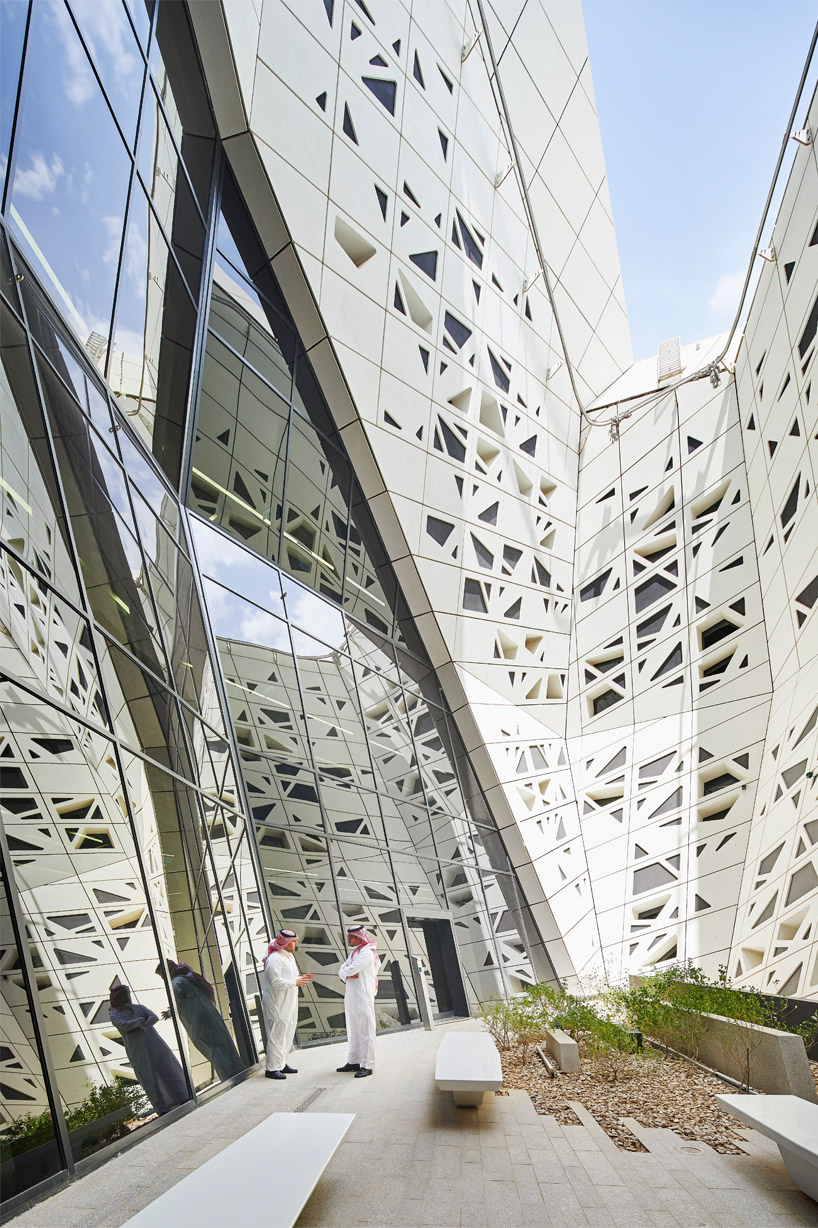
The campus is shielded from the intense southern sun; by opening up to the north and west. Image courtesy of Design Boom
A couple of interesting facts…
The heat is tolerated during the hottest parts of the year because researchers are able to travel from building to building via an underground passage. In addition, a series of smaller courtyards are cooled by “wind-catchers” which were built into the roof profiles.
The center courtyard dead-ends into a gorgeous mosque. It is among the few ever designed by a woman and Hadid certainly did it justice.
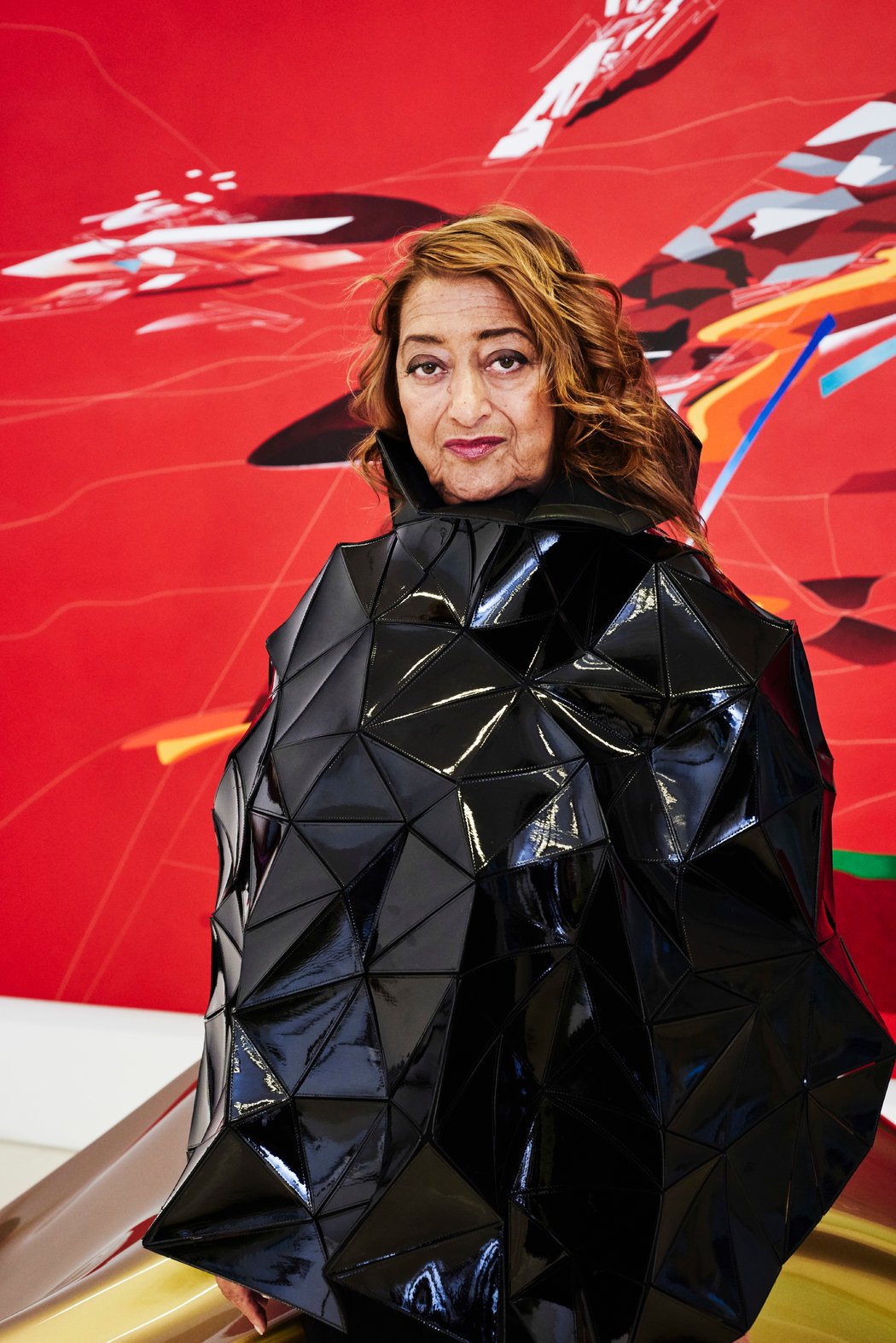
Zaha Hadid in February 2016, photographed shortly before her untimely death. Image courtesy of: The New York Times, photographed by Philip Sinden.
Zaha Hadid was, and remains, a feminist role model for all women, especially in the Arab world; representing a progressive ideal. For example, never known to wear a veil in public, Hadid was partial to the most forward fashion designers. Thus it’s fitting that she “teamed up” with King Abdullah in order to design his “project of his lifetime” and what he wanted as his legacy.
Unfortunately, neither Hadid nor King Abdullah were able to see the project come full circle; but there’s no doubt that they’d be very proud!
